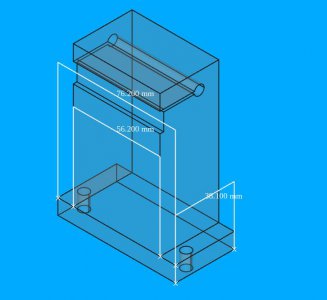- Joined
- Dec 20, 2012
- Messages
- 9,422
1/4" thick top is fine.About how much height over the blade does one need to make this work ok?
2" front to back is enough.About how wide does it need to be? More is better, but is 2.5" ok, or does the blade need more support?
I suggest two 10-32 SHCS to hold the blade and 10-32 or 1/4" to hold the body to the cross slide.I will need to drill my cross-slide since my lathe has no tee-slots. 2 M6 or 1/4" bolts ok, fore and aft? Or something larger? I'm thinking of machining feet (really more like flanges) so I can bolt through it into the cross-slide.
Go buy some 2" to 2-1/4" square 6061-T6. It isn't that expensive and I know for a fact that 6061 will not crack if you follow the general build I used. While 7075 is stronger, it is also more prone to crack with repeated stress/flexion. I would go with 6061. DO include both slots. The distance of solid stock between the slots only needs to be about 1/4" - 5/16" wide.I have some rough cut 1.625"x3.5" stock in 7075. No 6061 this big.
Be absolutely sure the bottom of the blade slot, and therefore the location of the tip of the tool, is on the exact centerline of your lathe. Find the centerline with cuts; DO NOT chuck up a pin in a collet and expect that to be accurate enough.
DO include a ledge in your design. It should butt up against the side of the cross slide. This prevents the tool post from spinning under load and allows you to lock the tool solidly to the cross slide with a single bolt.


